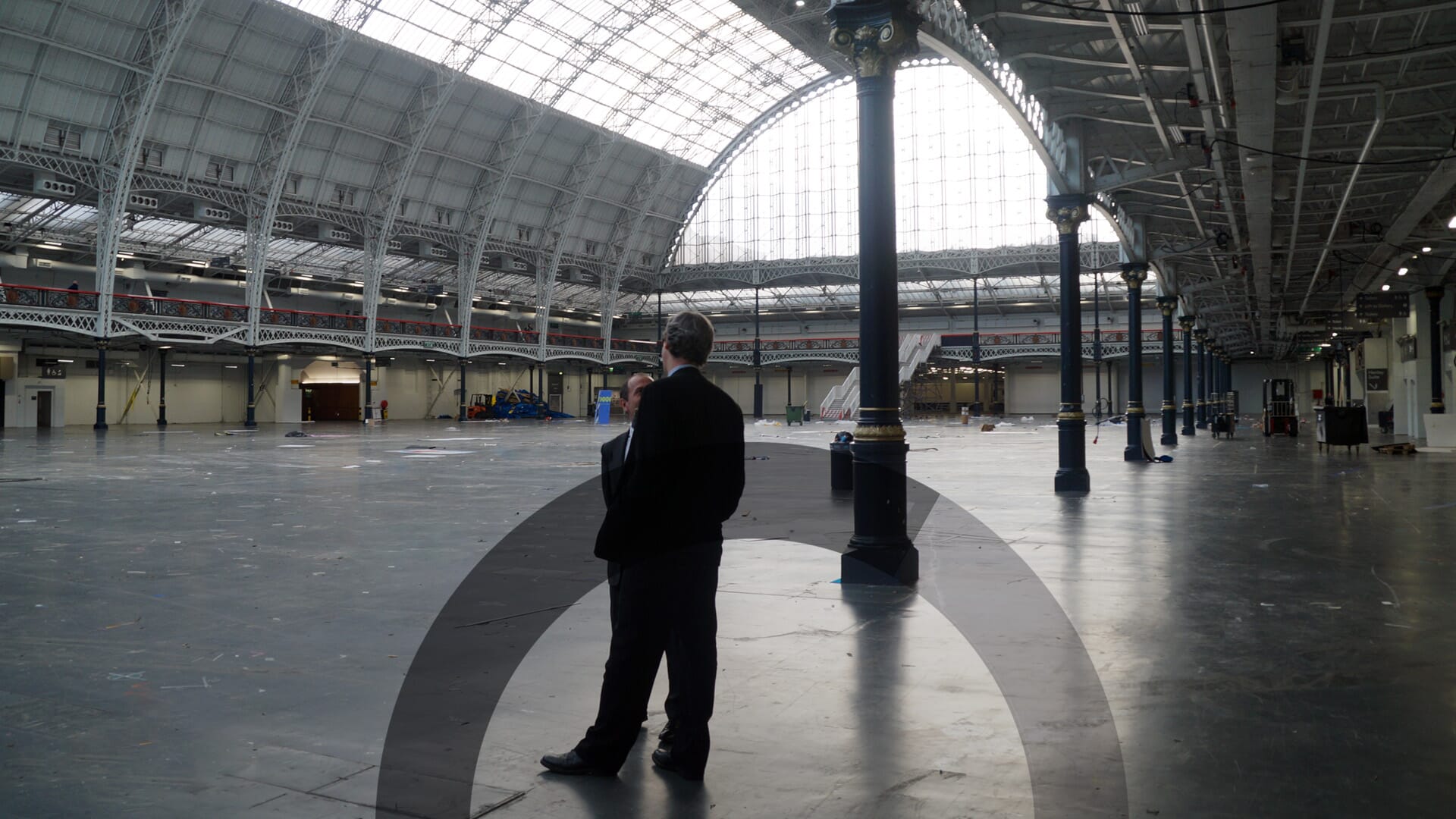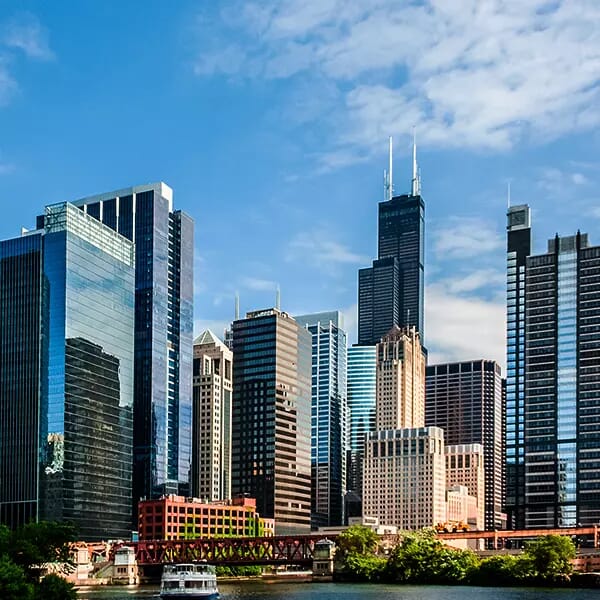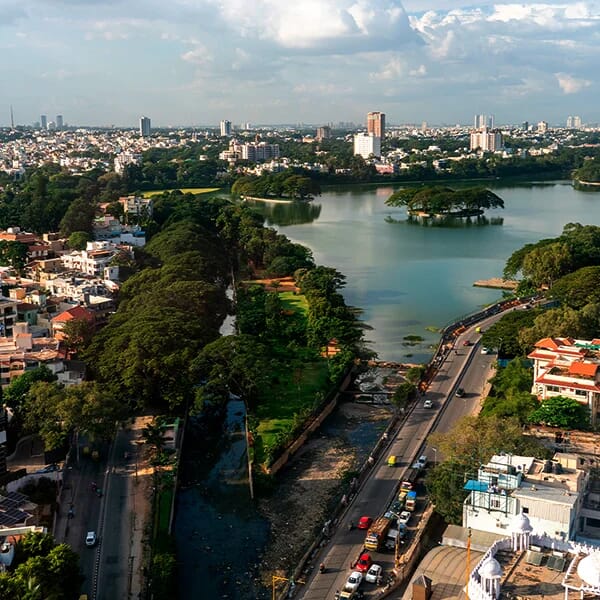 GRI
GRIOlympia placemaking: London’s ‘best-kept secret’
Lloyd Lee spoke to GRI Hub during GRI Club Europe’s meeting at Olympia in more detail about the mixed-use development.
March 6, 2019Real Estate
Lloyd Lee, managing partner of Yoo Capital, spoke to GRI Hub on the sidelines of GRI Club Europe’s meeting on ‘placemaking’, held at Olympia in London on 28 February 2019, to explain more about the Olympia project.
The Olympia project
Yoo Capital acquired the Olympia Exhibition Centre in 2017. Project design for the redevelopment of its 14-acre site began in August 2017, a planning application was submitted in September 2018 and the masterplan approved on 30 January 2019.
Lee explains that the primary challenge with the Olympia estate was logistics: “Over the last 50 to 100 years, the exhibition halls have been wonderful - people have loved them for generations. But as the modern way of showing exhibitions has grown, a load of logistical requirements has come along - trucks and vehicles - and the only place to put that on a nineteenth century estate is everywhere. As a result, when the exhibitions are on, they’re brilliant, but when they’re loading and unloading every five days, it’s a logistical nightmare.”
Solving Olympia’s logistical issues involved taking traffic off the road that encircles the site and putting it into a 200,000 sq ft logistics centre, from where trucks can load directly into the different halls. “As a result,” says Lee, “the entire estate can be opened up and pedestrianised. You end up with 2.5 acres of public realm, and that became the opportunity.”
Yoo Capital then set to work on creating complementary uses to Olympia’s exhibition halls. The site’s 10 acres includes spaces for offices and two hotels, operated by citizenM and Hyatt (in a converted multi-storey carpark), as well as a jazz club, restaurant, live entertainment, a new, open square and a performing arts venue - “probably the largest and most modern performing arts theatre built in London in the last few generations,” says Lee, who adds that “seven days a week, this entire estate will be vibrant.”
Fine-tuning the art of the possible
Yoo Capital’s approach towards designed the Olympia project started with what Lee calls the art of the possible: “Olympia needed a different lens to be applied, which was - what does the exhibition business need? What’s the right thing to do? And then you work backwards: does it actually mean it’s financially viable and sustainable? The art of the possible has to be sustainable, it has to be fiscally responsible. From there, we started to fine tune the art of the possible into something that was actually viable.”
Technology was vital in the design process, in particular the early use of a gaming platform operated by Cityscape Digital. Besides allowing an experiential way to understand, connect and optimise the various shapes and masses, the technology shortened the design process and planning journey by several months.
Yoo Capital also took a very open approach to how to balance uses across the development and the concept of ‘placemaking’, as Lee explains: “There’s no such thing as a perfect mix. That’s the very definition of a ‘mix’. If you’re looking to create a sense of place, then probably one of the most dangerous things you can do is just to apply a formula. That today is anathema in our industry. We didn’t build this plan in a vacuum, in a laboratory, and then go out and test it: we actually brought people into the laboratory and said, ‘Look, here’s our set of formulas, beakers - you work with us in creating your new home’. All of these different spaces have actually been designed in partnership - a kind of a co-authorship - with the actual occupiers who are taking the spaces.”
Financial value and exit routes
Mixed-use developments raise an interesting question over valuation when it comes to exit, especially when the whole appears to be worth far more than the sum of the parts. Lee explains that exit routes and valuation have in fact played a vital role in shaping the project: “Any investor has always got to look at the exit - probably before he gets to the entrance. You don’t get into something you don’t know how to get out of. We always think about liquidity and exit, but it’s not just for the sake of liquidity and exit: it tells you whether what you’re doing actually makes sense. Because if no one’s going to buy it, it probably doesn’t make sense in the first place. For us, the rigorous exercise we go through in looking at the exit, isn’t because we are necessarily exiting, but because it is the ultimate litmus test of whether or not what you’re doing is right.”
Into the future
Lee is conscious of the status and history of Olympia as a special place: “All the way back in the 1800s, this was where PT Barnum came to do his Greatest Show on Earth. It’s where Jimmy Hendrix played, where the Stones have played, where Buffalo Bill came. The stakeholders who have a hand in the future of Olympia are the locals, the local businesses, the borough, London, and in some respects, even the country.”
At the GRI Europe meeting, certainly, participants were uniformly impressed by the project, its scale and its success through planning - ‘London’s best-kept secret’, as one participant said. It was observed that placemaking was one of the hardest things to achieve, and that cities needed large-scale, financially sustainable developments like Olympia.
Mixed use developments will be discussed further at Europe GRI 2019 in Paris on 11-12 September, whilst hospitality will be the focus of GRI Hospitality Europe 2019 held alongside Europe GRI.
The Olympia project
Yoo Capital acquired the Olympia Exhibition Centre in 2017. Project design for the redevelopment of its 14-acre site began in August 2017, a planning application was submitted in September 2018 and the masterplan approved on 30 January 2019.
Lee explains that the primary challenge with the Olympia estate was logistics: “Over the last 50 to 100 years, the exhibition halls have been wonderful - people have loved them for generations. But as the modern way of showing exhibitions has grown, a load of logistical requirements has come along - trucks and vehicles - and the only place to put that on a nineteenth century estate is everywhere. As a result, when the exhibitions are on, they’re brilliant, but when they’re loading and unloading every five days, it’s a logistical nightmare.”
Solving Olympia’s logistical issues involved taking traffic off the road that encircles the site and putting it into a 200,000 sq ft logistics centre, from where trucks can load directly into the different halls. “As a result,” says Lee, “the entire estate can be opened up and pedestrianised. You end up with 2.5 acres of public realm, and that became the opportunity.”
Yoo Capital then set to work on creating complementary uses to Olympia’s exhibition halls. The site’s 10 acres includes spaces for offices and two hotels, operated by citizenM and Hyatt (in a converted multi-storey carpark), as well as a jazz club, restaurant, live entertainment, a new, open square and a performing arts venue - “probably the largest and most modern performing arts theatre built in London in the last few generations,” says Lee, who adds that “seven days a week, this entire estate will be vibrant.”
Fine-tuning the art of the possible
Yoo Capital’s approach towards designed the Olympia project started with what Lee calls the art of the possible: “Olympia needed a different lens to be applied, which was - what does the exhibition business need? What’s the right thing to do? And then you work backwards: does it actually mean it’s financially viable and sustainable? The art of the possible has to be sustainable, it has to be fiscally responsible. From there, we started to fine tune the art of the possible into something that was actually viable.”
Technology was vital in the design process, in particular the early use of a gaming platform operated by Cityscape Digital. Besides allowing an experiential way to understand, connect and optimise the various shapes and masses, the technology shortened the design process and planning journey by several months.
Yoo Capital also took a very open approach to how to balance uses across the development and the concept of ‘placemaking’, as Lee explains: “There’s no such thing as a perfect mix. That’s the very definition of a ‘mix’. If you’re looking to create a sense of place, then probably one of the most dangerous things you can do is just to apply a formula. That today is anathema in our industry. We didn’t build this plan in a vacuum, in a laboratory, and then go out and test it: we actually brought people into the laboratory and said, ‘Look, here’s our set of formulas, beakers - you work with us in creating your new home’. All of these different spaces have actually been designed in partnership - a kind of a co-authorship - with the actual occupiers who are taking the spaces.”
Financial value and exit routes
Mixed-use developments raise an interesting question over valuation when it comes to exit, especially when the whole appears to be worth far more than the sum of the parts. Lee explains that exit routes and valuation have in fact played a vital role in shaping the project: “Any investor has always got to look at the exit - probably before he gets to the entrance. You don’t get into something you don’t know how to get out of. We always think about liquidity and exit, but it’s not just for the sake of liquidity and exit: it tells you whether what you’re doing actually makes sense. Because if no one’s going to buy it, it probably doesn’t make sense in the first place. For us, the rigorous exercise we go through in looking at the exit, isn’t because we are necessarily exiting, but because it is the ultimate litmus test of whether or not what you’re doing is right.”
Into the future
Lee is conscious of the status and history of Olympia as a special place: “All the way back in the 1800s, this was where PT Barnum came to do his Greatest Show on Earth. It’s where Jimmy Hendrix played, where the Stones have played, where Buffalo Bill came. The stakeholders who have a hand in the future of Olympia are the locals, the local businesses, the borough, London, and in some respects, even the country.”
At the GRI Europe meeting, certainly, participants were uniformly impressed by the project, its scale and its success through planning - ‘London’s best-kept secret’, as one participant said. It was observed that placemaking was one of the hardest things to achieve, and that cities needed large-scale, financially sustainable developments like Olympia.
Mixed use developments will be discussed further at Europe GRI 2019 in Paris on 11-12 September, whilst hospitality will be the focus of GRI Hospitality Europe 2019 held alongside Europe GRI.



